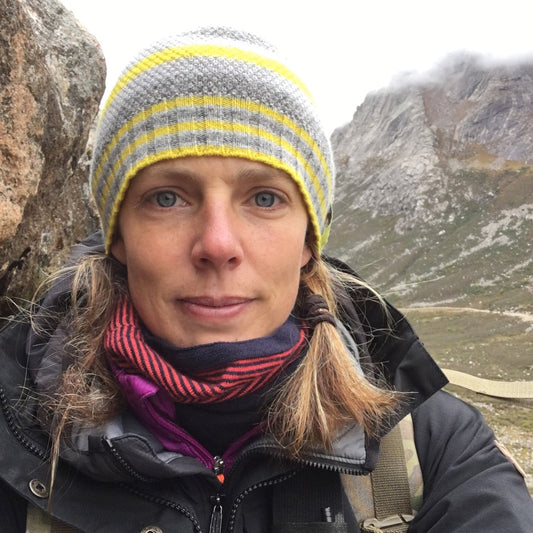ADVENTUROUS INSPIRATION
‘The Land of the Long White Cloud’ was a book gifted to me as a child by a relative living in Australia and was packed full of drawings and stories of Maori folklore. These weird, ethereal pictures captured the imagination of my seven-year-old self and from there; I was determined to visit this land of mythological creatures. Fast forward 10 years and after a summer of working at an outdoor centre after finished school, I began my first solo overseas adventure: a year in New Zealand. To cut a long story short, by a stroke of fate or luck I ended up working for an outdoor centre in the middle of the Southern Alps, surrounded by thick bush, rugged mountains and rivers spattered with eggy hot pools. Here I spent the year working and travelling and exploring the South Island in my free time.
GETTING TO KNOW MERINO
New Zealand did not fail to live up to my seven-year-old fantasies; in a stretch of only a few kilometres, you could drive past beaches, glaciers and dense jungle like forest. I rock climbed at the site of the battle of Narnia (not that I had seen the film at this point), trained as a raft guide on crystal clear waters and explored the ‘tramps’ – remote trekking routes – by myself and with friends, on foot or by mountain bike. I learnt a lot about myself during this year and also discovered the New Zealand Merino sheep. Merino sheep are one of the oldest breeds in the world and were brought to New Zealand from Spain. With a superbly woolly coat, they are incredibly resilient creatures. Their fine fleece helps to keep them cool in the summer as well as warm in the winter and so for this very reason, make for fantastic outdoor clothing.
I juggle my environments often; one day I’ll be in the jungle the next I’m climbing at high altitude, therefore the clothing I wear is incredibly important. Not just to allow me to do my job, but more importantly, my clothing can literally keep me alive. Alongside skills like navigation and map reading, knowing what to wear in the outdoors is a fundamental skill that can only be learnt and fully understood through self-experimentation. On meeting a client for the first time I can now literally tell how much adventuring they do from the clothing they wear, how their layering system looks and how comfortable they are in their clothing.
THE FUNDAMENTALS OF LAYERING
Whatever environment I’m visiting, I apply a layering system that is tailored to the environment and the conditions. Fundamentally this remains the same and I work three main layers: a base layer, a mid-weight thermal layer and a shell layer. In harsh and cold environments I might add extra layers but essentially they fall into one of these three categories. The purpose of my layering system in cold and temperate environments is to work with my body to keep heat next to my core but also wick (push) any moisture out through the layers. My layers need to be breathable too. If one of them can’t breathe it will create a collection point for any moisture and water, which being an extremely good conductor of heat, means it creates an energy drain on your body and can chill your core fast, putting you at risk of the potentially lethal Hypothermia.
In hot, humid environments – jungles and hot deserts – I want a layering system that cools me down. Moisture in the layering system can be a good thing in this instance, as it draws heat from your core, helping to cool you down when your body is struggling to regulate.
WHAT MATERIAL IS BEST?
Although there are various hybrids of base layers, the two materials that are able to wick moisture the most efficiently are synthetic materials and merino wool. I personally avoid the first. I spend weeks on end in remote areas where there is little access to washing machines. Synthetic base layers get a horrible stench very soon after wearing them – highly unpleasant for long periods of time! Hand washing can’t get rid of the smell either. Whilst in the jungle, the smell can really make me feel physically sick. I also find that synthetic base layer clothing dries out my skin terribly and when carrying rucksacks this can lead to chaffing. It’s no surprise that my choice of base layer for most environments is merino wool. With natural antimicrobial properties, wool doesn’t easily pick up external odours either. Occasionally when it has been wet for a few days, it may get a slightly ‘sheepy’ smell to it but I don’t find this unpleasant and is subtle. For cold and temperate environments merino work wonderfully too, as it’s super breathable and can push moisture away from the skin without losing heat. The UK’s mountain ranges are so changeable too that it can be very hard to regulate due fast moving conditions.
MERINO WOOL OR COTTON?
Merino wool is a good choice to combat this as it dries quickly and although it’s not ideal to have a wet layer in your system, it maintains heat when wet, which cotton for example does not. Cotton will feel cold to the touch whereas merino will never do so. In hot, dry environments I find a merino wool t- shirt or finer weight long sleeve top helps regulate the temperature just as I need. The only environment I rarely wear merino in during the day is the jungle as it’s an incredibly damp and abrasive to skin and clothing. I find the conditions too harsh during the day for the normally very durable merino wool to handle. The environment softens the fibres too much and when I’m using a machete and prickled by bushes, I find it easy to rip. However, once I have finished for the day and am settling in for the night, I turn to my merino to put on as a dry layer. If I was simply trekking through the jungle, merino would be great but I’m usually cutting miles of narrow trails!
WHY FINDRA?
I was excited to stumble across FINDRA as not only do I love their ethos and focus on eco and animal-friendly methods of Merino sheep farming but I also love their products. Over the past year, I have taken FINDRA to jungles, deserts, the Arctic and numerous mountain ranges. I love their attention to detail. Initially aimed at female mountain bikers, the longer back found on many of their pieces, together with the longer arms for reach, are perfect for a variety of outdoor activities including climbing, mountaineering, skiing and hiking. The cowl necks of the Caddon and Marin tops gives more room for breathing, pulling up over your chin or accessorising with the super cozy neck warmers. The Rouler top is great too for wearing on its own or layering the Route t-shirt over the top.
For me, the colours are important too. Mostly I work in the shadows and am behind the cameraman; chasing a presenter and celebrity and often roped up to them too. As such, it’s not hard to find myself in the shot occasionally and it helps the camera operators that the colours allow me to blend into the environment, rather than a luminous blob in the middle of their shot! More recently it has been challenging to find clothes that are inspired by nature’s palette as well as being highly durable. Both are essential to meet my lifestyle requirements, and I want to look good in what I wear too. Looking feminine is important, as well as items that don’t cling to me, I want to feel comfortable but have a sense of style, be it in the jungle, the high altitude mountains or chilling out by a campfire!




